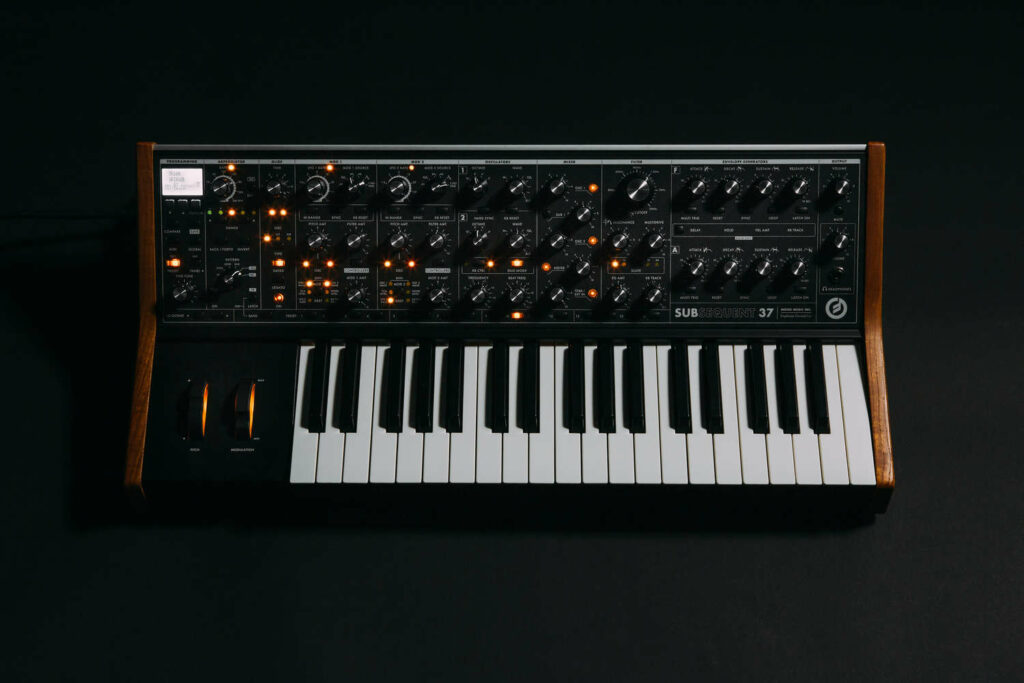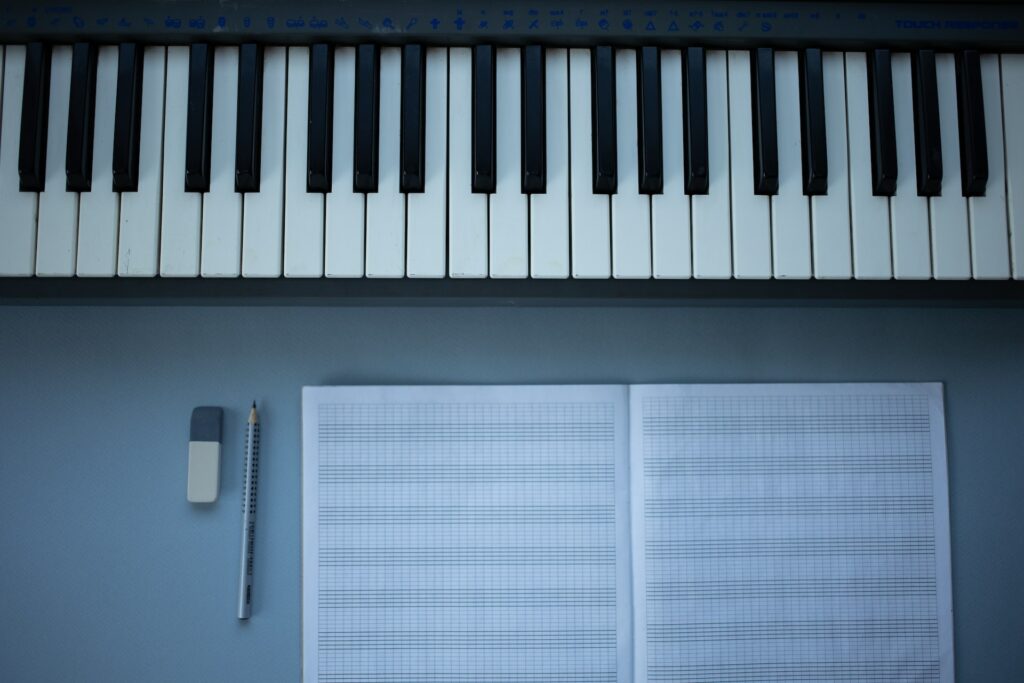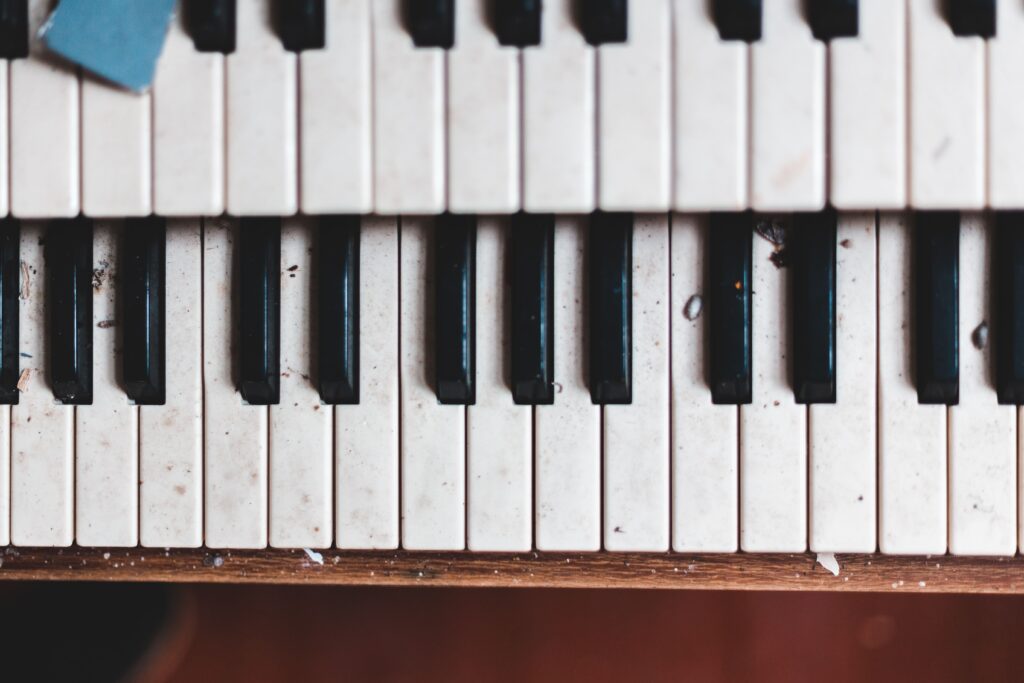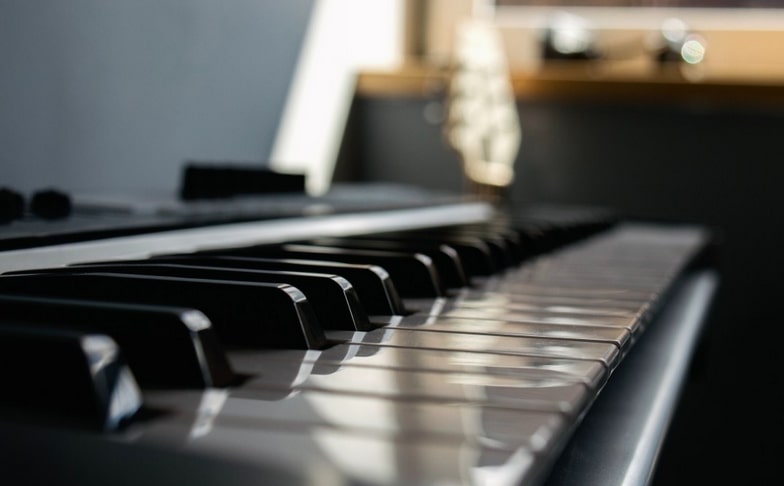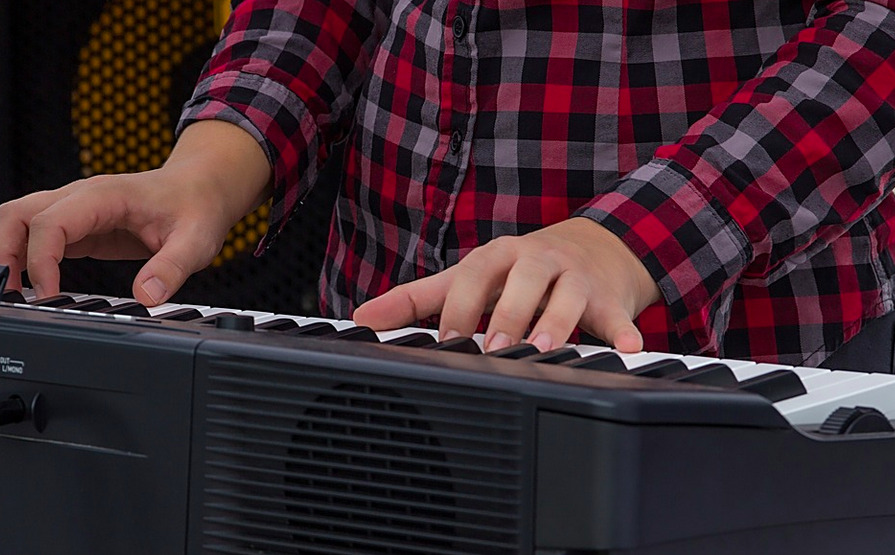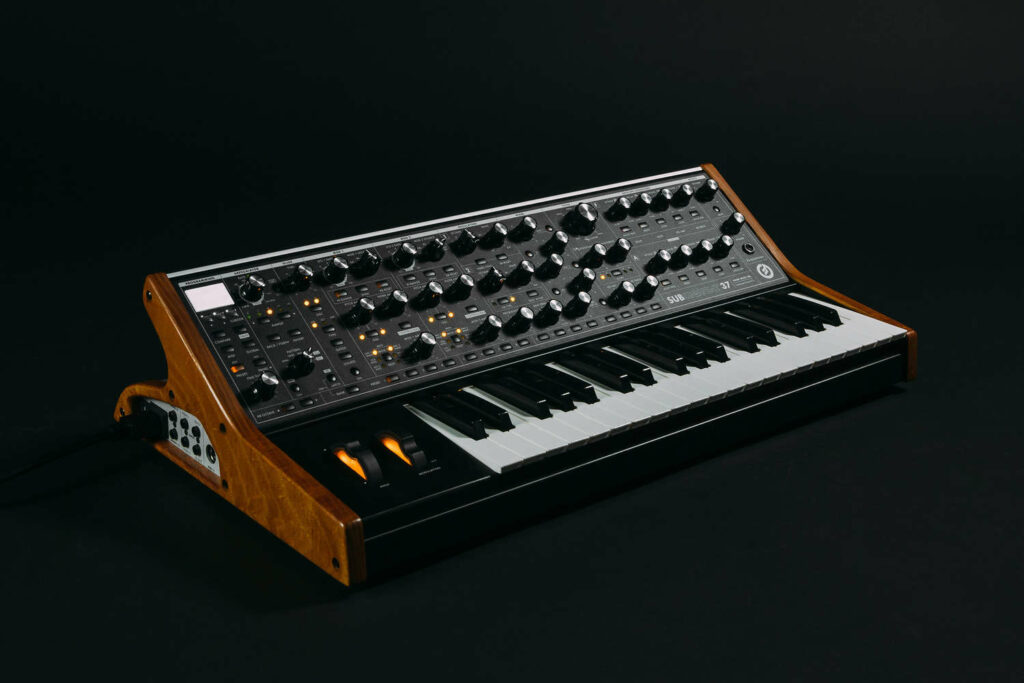Moog Sub 37 is a 2-note paraphonic analog synthesizer that expands on the highly effective Sub 37 Tribute Edition’s award-winning design. It is a modern and beautiful synthesizer made with great care. With 40 knobs and 74 switches on its control panel, you have rapid access to a wide range of analog sound-design tools and onboard sequencing choices. Through the incorporation of a number of user-requested acoustic and functional improvements. The Subsequent 37 improves upon its source.
Each improvement adds new sound dimensions and enhanced playability while preserving the magic and personality of its predecessor. The Sub 37 fits well in the Moog portfolio as something a true synth enthusiast would adore. There are many great synths available from many different companies, but Bob Moog’s synths are some of the best. It’s a lot of fun and can be performed anywhere, both at home and on stage.
The Sub Phatty, which is a better alternative if you prefer to play monophonic melodies and synth bass rather than chords, offers more functions despite possibly lacking some of the features found on the more expensive Moogs.
About Moog Subsequent 37
The Moog Subsequent 37® is a 2-note paraphonic analog synthesizer that expands upon the very effective Sub 37 Tribute Edition’s award-winning design. With 40 knobs and 74 switches on its control panel, you have rapid access to a wide range of analog sound-design tools and onboard sequencing choices.
Through the incorporation of a number of user-requested acoustic and functional improvements, The Subsequent 37 improves upon its source. Each improvement brings new sound qualities and enhanced playability while preserving the magic and personality of its predecessor.
There is twice as much headroom in the Subsequent 37 mixing section as there is in the Sub 37 Tribute Edition. With both mono and duo performance modes available, this gives users access to a fresh selection of vintage clean tones. Gain-staging in the Ladder filter has been modified to increase harmonic saturation and analog compression, resulting in a richer low end overall. This was accomplished by utilizing the mixer’s increased flexibility.
A retuned Multidrive circuit that goes well beyond the roughness and growl of the original Sub 37 completes the sonic progression of the Subsequent 37. Each Subsequent 37 also includes a software plugin/editor for both Windows, an enhanced keybed for better playability, and a powerful headphone amplifier powerful enough to drive the most demanding headphones.
The headroom in the sub-37 mixing section is twice as much as it is in the sub-37 tribute edition. With both mono and duo performance modes available, this gives users access to a fresh selection of vintage clean tones. Gain-staging in the Ladder filter has been modified to increase harmonic saturation and analog compression, resulting in a richer low end overall. This was accomplished by utilizing the mixer’s increased flexibility.
A retuned Multidrive circuit that goes well beyond the roughness and growl of the original Sub 37 completes the sonic progression of the Subsequent 37. Each Subsequent 37 also includes a software plugin/editor for both, an enhanced key bed for better playability, a powerful headphone amplifier capable of driving even the most demanding headphones, and a sound engine overhaul.
Pro audio musicians may smile somewhat when they hear the term “analog synthesizer.” They most likely have the venerable Moog synthesizers in mind. They may be familiar with the fattest, warmest analog synth sound currently on the market. They might not be aware of the fact that the story truly starts almost fifty years ago. The Moog synthesizers’ namesake, Robert Moog, really got his start in the 1960s while still a student. He was only not producing synthesizers.
Theremins were indeed his first creations. Theremins are instruments that track the movement of your hand and match the frequency. While theremins are still available today, Robert Moog took this concept and developed it to a more useful level. Many people credit Moog’s work for the synthesizer’s enormous increase in popularity.
Therefore, I’d like to discuss the Moog Sub 37, a more recent model of the analog synth that helped popularize synthesizers in the 1970s. Since then, there have been many incredible synth designers, like Dave Smith, for example.
What is appreciated about the Moog Sub 37, what other synths do better, and how it compares to synths like the Dave Smith Pro 2 and Moog Voyager? One of the most eye-catching features is how it appears to glide. The frequencies, the keys everything just kind of melds together. So it’s like sweeping your hand across the water to make small ripples as you quickly play the C scale on its 37-key piano. It may sound overly poetic, but you see what it meant.
Playing it is quite simple. The filters are even better. Your typical resonance and cutoff filters are very powerful. When the cutoff filter was set all the way up, the saw waveform resembled a chainsaw that was buzzing. A baby might fall asleep if you turn it down to a chimey, muffled round sound.
Now, when testing the filters, turn the resonance and cutoff all the way up, leave the resonance on, and slowly roll off the cutoff. It does a sci-fi-sounding sweep down several steps in the frequency range and gives the impression that you are playing music in outer space. It is therefore known that the filters are effective if it sounds clear and precise. If it has trouble with this, the design could have been a little bit better.
This test is obviously passed by the Moog, but there are barely any doubts about it. You’ll notice it’s not nearly as clean if you purchase anything less expensive, like a Korg Volca synth. You get what you pay for, but it’s a tenth of the cost at about $150. There are about 250 presets, and they are all rather good. The presets’ sole drawback is that because they’re so precise, you’ll need to perform a little amount of modifying to achieve the sound you want if you don’t immediately want that particular one.
However, after you begin to become familiar with synths, you’ll understand how to manipulate them to perform the tasks you require. For instance, if it sounds too buzzy, you can lower the cutoff filter or, if you want something drastically different, switch the oscillator to a different waveform. The Moog arpeggiator is among all-time favorite instruments.
Numerous different patterns can be performed, and a step sequencer allows you to sequence songs by gradually adding notes. If you’re ever interested in using synths in recording and production, it is highly encouraged that you do. The portability and playability aspects are two of the most significant factors for a synth enthusiast. Even though the Moog Sub 37 weighs 22 pounds, it’s not particularly hefty to carry around. You should absolutely obtain at least a protective case for this synth if you decide to purchase it because you don’t want to drop it by mistake.
Regarding gameplay, there is the availability of both audio and headphone outputs, as well as the ability to adjust the volume independently for each output. So, for example, you could choose a new sound and test it on stage while on mute. If you’re interested in learning more, their website goes into great detail about all the features and all the extremely technical specifications.
The sound engine is analog, with a 37-key keybed and a choice of monophonic or paraphonic polyphony (which can be poly-chained). Note Pitch Bend, Mod Wheel, After Pressure, Velocity, semi-weighted with After Pressure, LCD with 128 × 64 pixels and a white backlight, controllers, and sound sources – 1 Square Wave Sub Oscillator, 2 Variable Waveshape Oscillators, 1 Analog Noise Generator, 1 External Input/Filter Feedback, Oscillator calibration range: 22Hz-6.8KHz. Take note that the gliding module’s assigned Osc1/Osc2/Both ranges at 8′ is 18–116. LCR, LCT, EXP, Gated, and Legato are the types available.
Features of Moog Sub 37
- The Moog Sub 37 design has all the controls and features found in the sub 37 tribute Edition.
- A great aspect of the Moog Sub 37 is the Sound engine Evolution which has a richer low-end and greater sonic Dimension. Oscillator Calibration Range- 22Hz-6.8KHz. Note range at 8’ = 18 – 116.
- The more multidrive on the Moog sub 37 has a wider range.
- There is room for two and more headroom means Duo Mode sounds even better.
- Also present is a 37-note key bed that is lightweight with swift action and after touch.
Sound of Moog Sub 37
Therefore, while this synth excels at monophonic synthesizers, which allow you to play only one note at a time, people especially love the poly mode, which transforms the synth into a polyphonic synthesizer, allowing you to play multiple notes simultaneously. When you want to play synth chords, which you cannot do with a mono synth, this is always helpful to the artist.
As a synth and keyboard player, chords are necessary for around half of what the player needs, so having that choice is always welcome. Despite having only 37 keys, the synth nevertheless has enough space to play those larger chords.
In case you’re unfamiliar, oscillators essentially alter the sound waves that emerge from your synth. Only recently has it been able to run two oscillators simultaneously, but the Sub 37 makes it possible. Therefore, it is totally possible to combine a saw and a square. The sine wave, a circular, mellow sound, and the sawtooth, a well-known, angular synth sound, are a favorite to combine. The flavor of the entire sound is rounded out and thickened as a result, adding to the infamous Moog fatness.
Specifications of Moog Sub 37
- It has Monophonic /Duo-Paraphonic.
- It contains 37 keys and is velocity-sensitive.
- There are Delay, Attack, Hold, Decay, Sustain, and Release envelopes.
- The Moog Sub 37 comes with 256 Presets.
- It also features a Syncable Arpeggiator and Step Sequencer.
- There are Cutoff and Resonance Filters.
- It weighs 22 pounds.
- Compatible with Audio and Headphone Outputs.
Also Read: Best Digital Pianos for Advanced Pianists
Pros of Moog Sub 37
- The Sub 37 design includes all the settings and capabilities featured on the Sub 37 Tribute Edition Sound engine Evolution, which has a richer bass end and more sonic Dimension. 22Hz – 6.8KHz Oscillator Calibration Range range of notes at 8′ is 18–116.
- Wider range and dirtier than ever before, More Multidrive
- More headroom equals more space for two. Even more pleasing is Duo Mode.
- It has a lightweight 37-note keybed with an after-touch and quick action.
Cons of Moog Sub 37
- There is a rather constrained range.
- It has tiny and minimal units.
- The Moog Sub 37 feels a bit heavy.
Competition of Moog Sub 37
Several businesses are vying with one another to surpass one another in order to maintain their dominant position in the market. The keyboards in the contest are;
Novation Station-II Analog Mono-Synth vs Moog Sub 37
A modernized version of the vintage original bass station, bass station II is an analog mono-synth. It contains a patch save feature, a completely analog effects section, two filters, two oscillators, and a third sub-oscillator. It only takes the addition of a step sequencer, full-sized keys, and a potent modulation section to create a synth that is designed for bass but is actually capable of so much more.
With a brand-new “acid” filter complementing the “original” Original bass Station filter, 64 factory patches, 64 user slots, a pattern-based step sequencer, two oscillators, and an additional sub-oscillator, this analog synth is a brand-new version of the iconic Novation bass Station. All key parameters have separate controls on the analog synth configuration. features separate filter overdrive for an aggressive, crunchy sound, fully analog distortion and filter-modulation effects, and more.
- Create a huge variety of sounds- Two tuneable, analogue oscillators offer a selection of four waveforms, a sub-oscillator, plus noise and ring modulation to help you achieve the sound you’re looking for.
- Enormous bass and shrieking leads- Switch the Classic Filter between low-, high- and band-pass modes with 12 and 24dB/octave slopes to make the Bass Station II as mellow or aggressive as you want.
- Improved analogue filter stage- Two distinct analogue filter types: the classic multi-mode filter and a new 24dB Acid Filter offer a massive variation in sonic possibilities.
Moog Subharmonicon Semi-Modular Polyrhythmic Synthesizer vs Moog Subsequent 37
The Subharmonicon draws its inspiration from the innovative analog music and instruments that emerged in the 1930s and 1940s. These ancient ideas were based on the foundations of mathematics as well as music.
Leading thinkers like Joseph Schillinger and Leon Theremin created a variety of instruments that ultimately influenced what you’ll find here; it fuses modern style with old charm! Sonic exploration is encouraged using a multi-layered sequencer and a 6-tone sound engine.
Utilize both to explore subharmonics, polyrhythms, and the fascinating correlations they produce. From the ground up, you’ll be able to create organic sequences that change and develop as you play. The Subharmonicon is simple to operate thanks to a variety of hands-on controls that are straightforward.
Although you’ll be producing intricate patterns and noises, it has been designed to be as user-friendly as possible. This small, powerful synth shouldn’t be taken lightly because it includes two VCOs, two four-step sequencers, four rhythm generators, and four subharmonic oscillators.
- Six Tonal Sources: 2 Voltage Controlled Oscillators each with 2 subharmonic generators provide a dense harmonic bed of sound
- Four Rhythm Generators: Each rhythmic source can drive either sequencer (or both) for surprising and unexpected polyrhythms
- Two Sequencers: Each four-step sequencer can drive any combination of its associated VCO and subharmonic generators
Grandmother Semi-modular Analog Synthesizer Sequencer vs Moog Subsequent 37
Playable Semi-Modular Analog Goodness that is delightful. Arpeggiator, Spring Reverb, and a 32-key Semi-Modular Analog Synthesizer are included. The Moog Grandmother, which was inspired by vintage Moog synthesizers from the 1970s and 1980s, returns Moog to its modular beginnings. A wide sound spectrum with unmatched power and tonal character is delivered by the entirely analog circuitry, which retains the warmth and gritty character of vintage synths.
The 32-note velocity-sensitive keyboard offers fluid playability and an expression-enhancing feel that is similar to that of a grand piano. The distinctive design is the result of numerous modules that were carefully chosen and combined to create a synthesizer that is really one-of-a-kind.
The Minimoog’s oscillators, the CP3’s mixer, and the Moog 905’s Spring Reverb Tank are all used in this instrument. Dual analog oscillators with variable waveshape and hard sync options are the brains of the Moog Grandmother. This fusion of antique modules yields a flexible sound palette that can be used to produce anything from atmospheric pads to retro-style synth leads.
- 32-key Semi-modular Analog Synthesizer with Spring Reverb
- Sequencer - Dark
- Arpeggiat
Novation MiniNova Analog Modeling Synthesizer vs Moog Subsequent 37
With its amazing performance controls, the Focusrite MiniNova is a potent mini-keys synth that lets you modify and distort both the built-in sounds and your own voice. It has 256 sounds and the same synthesizer as UltraNova.
A synth engine of the Nova class is also included. Because of its small size, powerful sound, and performance/editing controls, MiniNova is ideal for producers, touring musicians, and anybody else who uses a computer to generate music. Another option is a keyboard controller with 37 keys and MIDI I/O. You may recreate traditional vocal effects with the VocalTune and vocoder, as well as explore novel voice-bending possibilities.
The MiniNova features 256 built-in sounds and room for an additional 128 sounds. You can store as many sounds as you like on your computer thanks to the free freeware Patch Librarian that is included. In addition to having eight back-lit buttons, MiniNova contains knobs that let you ‘animate’ sounds. These trigger “mods” in the synth engine have extraordinary power to warp sound.
- Make Huge Sounds- Create deep, gritty bass, soaring leads, lush pads, and vintage sounds with up to 18 voices and powerful effects.
- Built By a Legend- MiniNova’s synth engine was conceived, shaped, and refined by British synth legend Chris Huggett and has his five decades of passion, experience, and expertise behind it.
- Gently Tweak or Instantly Warp- Subtly tweak your sounds with the knobs, or totally warp them with the Animate buttons, pitch, and modulation wheels.
Conclusion
There are a lot of wonderful synths out there by numerous different firms, but Bob Moog’s synths are some of the greatest, the Sub 37 fits well in the Moog portfolio as something a true synth enthusiast would adore. It can be played anywhere, both at home and on stage, and it’s a lot of fun.
The Sound engine Evolution, which has a richer bass end and more sonic Dimension, is a fantastic feature of the Moog Sub 37. Although it may lack some of the capabilities featured on the more expensive Moogs, the Sub Phatty, which is a better option if you prefer to play monophonic melodies and synth bass rather than chords, offers more functions. But the Sub 37’s ability to feel terrific and sound both fresh and familiar is a favorite feature.
Sub 37 provides you with the means to improve upon the traditional synth sound, which can always be expanded upon. The Sub 37 is among the greatest because it performs so many wonderful things while being inexpensive compared to top-tier versions.
You Might Also Like
- Yamaha Clavinova CLP-775 Review
- Best Synths for Ambient Music
- Best Digital Pianos Under $700
- Best Digital Piano for Classical Pianists
Frequently Asked Questions (FAQs)
1. What is the Difference Between Moog Sub 37 and Subsequent 37?
There is twice as much headroom in the Subsequent 37 mixing section as there is in the Sub 37 Tribute Edition. With both mono and duo performance modes available, this gives users access to a fresh selection of vintage clean tones.
2. Is Moog Subsequent 37 Polyphonic?
Polyphonic analog synthesizer Model 37 by Moog. Due to the fact that sound waves are produced in an analog circuit, analog synths also offer a wider diversity of sounds. There are countless possible interactions between the various circuit components, such as oscillators and filters.
3. When Was the Moog Subsequent 37 Released?
In 2014, Moog Music began producing the monophonic analog synthesizer known as the Moog Sub 37. The synthesizer contains digital modulators and an analog signal route. Switched-On Bach (1968), a best-selling album of Bach tunes reworked for the Moog synthesizer by Wendy Carlos, introduced the Moog synthesizer to the general public. Rock and pop groups like the Doors, the Grateful Dead, the Rolling Stones, and the Beatles embraced it in the late 1960s.
4. Is Moog Analog or Digital?
Moog One maintains a fully analog signal route with no in-line conversion when insert effects are off, despite the fact that its onboard effects are digital. The Moog synthesizer, which was created by Robert “Bob” Moog in 1964 and revolutionized the music industry by giving musicians access to a significantly expanded auditory universe, is best known for this.
5. Where is Moog 37 Made?
The Moog Music SUBsequent 37 CV, a limited edition all-analog synthesizer with 40 parameter knobs and 74 switches, is an enlargement of the Moog Subsequent Tribute Edition. Only 2,000 devices, all of which were made by hand in the Moog plant in Asheville, North Carolina, will be made available globally.


